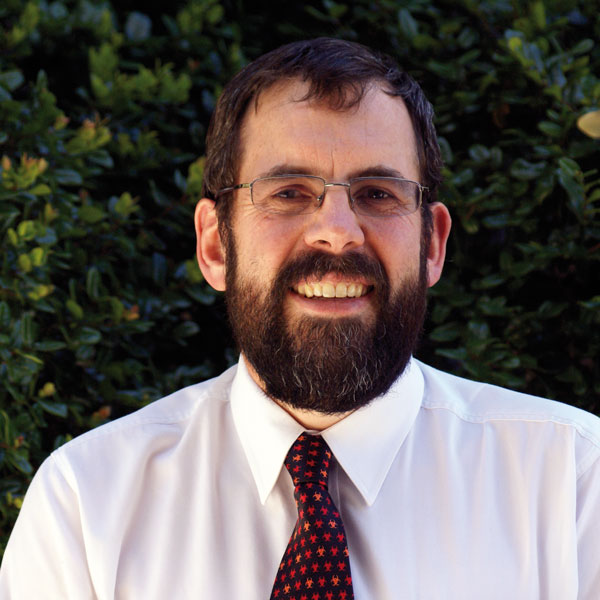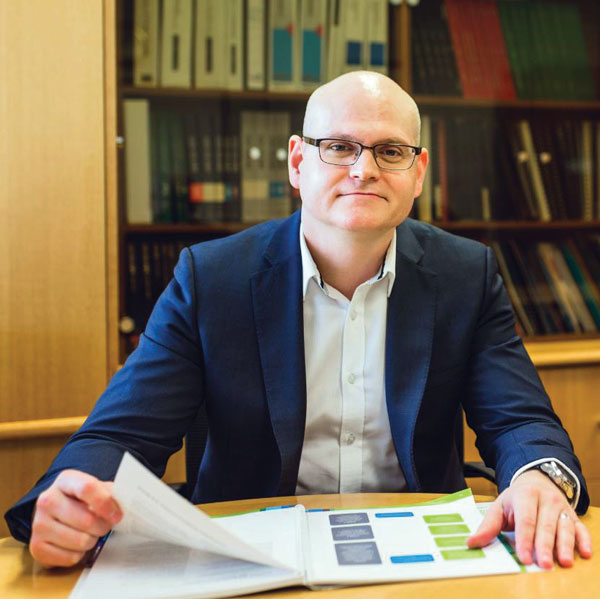 Public health may have once been the the quiet achiever of the health system, but COVID-19 has changed all that.
Public health may have once been the the quiet achiever of the health system, but COVID-19 has changed all that.
Cigarettes, alcohol, illicit drugs, prescription opioids, suicide, mental illness and sexually transmitted diseases all share an unfortunate commonality: they are, in widely varying degrees, bad for us.
This simplistic summation may seem obvious but if you dig a little deeper, you will find public health policy at the root of this schema.
The role of public health, now more than ever, has come to the fore of the collective consciousness thanks to the coronavirus pandemic, with constant reminders of what we should and should not be doing and what we are not permitted to do.
Australia and particularly New Zealand’s success in avoiding the worst of the pandemic is in large part due to the population’s trust in public health, trust of those elected to act in the best interests of their constituents and trust that they follow the best advice from specialists.
Yet, as can be seen in countries such as the United States and Brazil, which seemingly are unable to control the spread of the virus, another commonality is shared: wholesale undermining of public health.
The failure of these countries to manage the pandemic highlights the dangers of politicising and ultimately delegitimising public health, which is why countries such as Australia and New Zealand need to be especially careful now in the way they deliver messages to maintain the trust of their populations.
That is easier said than done.
Managing the message
It may be reductionist to say public health is all about the messaging, even though its success is heavily reliant on effectively communicating consistent messages, particularly in a pandemic such as COVID-19, that requires direct and immediate results.
The Chief Health Officer of Western Australia, Dr Andrew Robertson, and his department are responsible for ensuring the messages are successfully delivered to the state.

“I would say within the context of the COVID-19 pandemic, or any outbreak for that matter, consistent public health messaging is a critically important public health intervention,” Dr Robertson told Medical Forum.
Although reducing the spread of the virus has been the main objective of the messaging, Dr Robertson explained this was shaped by national messaging, as well as correcting mistaken statements, emphasising shared vulnerability, and being open about areas of uncertainty and complexity.
“This was crucial in establishing credibility and building public trust, particularly with the rapid implementation of restrictions when Australia first started recording COVID-19 cases.
“As we contemplated health systems under a huge amount of pressure, communication became a crucially important intervention to ensure that all members of the WA community worked together to protect themselves and others to avoid the emergency department, hospital ward, or intensive care units,” he explained.
“The messaging needed to get the balance right on communicating the risk of a virus that initially was not present in WA, reassuring the public, and reinforcing the potential urgency of the challenges we might face in the months ahead.”
Balancing act
While communicating a harmonised, inclusive, and tangible message that is understandable for most of population is the objective, the difficulty is in reaching those who are not in the ‘most’ category.
“Clear, simple and consistent public health messaging is critical. To address some of the difficulties in that task, we have worked to understand the needs of specific groups who might experience barriers to accessing information, and this includes providing information in multiple and accessible formats.
“For example, we have a collection of resources for Aboriginal and Torres Strait Islander people, and resources available in different languages and interpreters on hand to serve our culturally and linguistically diverse population.
Trust the source
“However, without the public’s trust, public health messaging will not achieve the desired response in terms of motivating citizen behaviour to comply with measures to reduce the spread of the virus.
“The WA community, including our elected officials, has maintained a high level of public trust in the health response and has subsequently listened to the advice, particularly when restrictions needed to be imposed around social distancing, mass gatherings and other public health measures.
“As a result, WA has maintained consistently low numbers of new COVID-19 cases and succeeded in limiting the spread of the virus. This has allowed us to ease restrictions in a way that supports our economy, with minimal risk to the community’s health.”
Politicisation of public health
However, trust is not iron clad and can be easily eroded with partisan interference as witnessed in the US and Brazil where the severity of COVID-19 has been downplayed, public health apparatus have been undermined and a disproportionate spike of cases the result.
According to Dr Robertson, politicians have deferred to the advice and evidence from public health specialists in Australia.
“All Governments have worked closely with their public health officials to get the advice required to guide their decisions and to support the operational requirements needed to implement those decisions.
“As the Chief Health Officer, and public health regulator, I must ensure that I fulfil the legislative responsibilities pursuant to the Public Health Act to ensure the law protecting the health of the community is properly administered. As such, I am required to be independent and nonpartisan.
“We only have to look to other countries with uncontrolled COVID-19 outbreaks to observe the impacts of a fractured relationship between politicians and public health experts.
“A strong relationship between politicians and public health experts is crucial to ensure a united front and consistent, evidence-based public health messaging nationally. All this works to establish and maintain public trust to ensure the uptake of preventative strategies.
“Fostering a strong, collaborative and respectful relationship between politicians and public health experts also ensures all sides are working towards a common goal. This is important in ensuring that, when public health recommendations are made using the highest quality scientific data, politicians will give due consideration to this advice in their decision-making.
False facts
When the wheels come off the public health bandwagon, the outcomes can be catastrophic, such as with the anti-vaccination movement, based on the infamous research of Andrew Wakefield who fraudulently claimed causality of autism with the measles, mumps and rubella vaccine. Since his discredited paper was published in 1998, anti-vaxxers have disseminated this ‘evidence’ to support their propaganda claiming harmful effects of vaccines.
Public health may be the domain of governments to communicate health messages to most of their populations, however, there are cohorts of sceptical, susceptible, and gullible people who just cannot be reached by mainstream public health and are prime targets for messaging from ‘advocates’, ‘influencers’, and ‘experts’, such as Mr Wakefield, willing to broadcast alternative narratives, light on facts and heavy on speculation.
Mr Wakefield is now using the coronavirus pandemic to persuade whoever will listen to his counter-factual narrative that COVID-19 vaccines, once developed, will be dangerous and people should be suspicious of them.
If anti-vaxxers can teach us anything, the lesson is, regardless of the message, some people will accept it, while others will not.
“The spread of falsehoods is not a new phenomenon,” said Dr Robertson. “I can appreciate they have gained unprecedented emphasis in recent years through digital media, which often has no editorial oversight.
“Countering false claims requires an across-the-board response, which brings me back to the importance of clear, coordinated, transparent and evidence-based public health messaging. If this is put in place from the start and public trust is developed and maintained, this makes it significantly easier to lessen and dilute the impact of falsehoods.
“From a department perspective, the DoH WA acts as the lead agency to advise the Department of Premier and Cabinet on the health aspects of a whole-of-government response. This ensures one point of truth to strengthen the COVID-19 messaging, rather than information splintered across a variety of sources.”
Mixed messages
While it is expected that sovereign countries will lead their own public health policy, the pandemic has emphasised how differing those approaches can be, even for neighbouring countries such as in Scandinavia, where Sweden took a different approach to its neighbours.
Although Australia does not share a border with Sweden, can its decisions affect Australia? According to Dr Robertson, absolutely.
“As a global epidemic, there are important lessons to be learnt from other countries which have taken different approaches to us in terms of limiting the virus.
“These lessons have been both good and bad, with some countries controlling the outbreaks well, such as South Korea and New Zealand, while other countries have struggled, with surging infection rates, catastrophic death tolls, the collapse of health systems and strict and long-term lockdowns.
“Our public health messaging is based on the best available evidence, with WA’s success in controlling the spread of COVID-19 being world-leading. If anything, this strengthens our own messaging,” he said.
Dr Robertson emphasised the role of the Australian Health Protection Principal Committee (AHPPC), the key decision-making committee for health emergencies in Australia.
“The AHPPC includes membership from all state and territory Chief Health Officers, including myself, and is chaired by the Australian Chief Medical Officer.
“The AHPPC began working closely together at the beginning of the pandemic and continues to meet daily to discuss new evidence and issues, which requires consensus from the committee, and provide public health advice to the National Cabinet.
“The AHPPC works with states and territories to develop and adopt national health protection policies and guidelines to ensure a coordinated COVID-19 response through the alignment of plans. Again, this additional level of scientific oversight serves to strengthen our own evidence-based messaging,” he said.
Communicating risk
An important aspect to public health is clearly and concisely communicating risk to change behaviour, which may sound simple yet is anything but, particularly within the ever-changing environment of a pandemic.
“It does take a bit of time for knowledge to filter through to the general public and as soon as it does, things change. The real challenge of the pandemic is just how quickly things are changing [and our understanding of COVID-19] so information can go out of date so quickly, Dr Carissa Bonner explained to Medical Forum.

Dr Bonner is a behavioural scientist and research fellow at The University of Sydney who specialises in evidence-based decision making and risk communication strategies to address problems in public health.
Although the understanding of COVID-19 is still growing, there are some knowns that are stable, and it is these aspects which are important to convey continually to the public, according to Dr Bonner.
“We know that the threat is real and that can be a consistent message. We know the main ways to prevent [transmission] have not really changed: social distancing, basic hygiene, and handwashing. And now, in Australia, the really important thing for people to know is when and where to get tested so that we can keep it under control.
“Although the evidence is changing all the time, the basic messages we need to convey are quite consistent, which is something that all levels of government can do consistently.”
Confidence in message
So far, the Australian population has accepted the federal and state governments responses, according to Dr Bonner’s research.
“Confidence in state governments is about 75% and the federal government 65%, which compared to countries such as France and the US, is very high.”
Dr Bonner emphasised that this research was conducted in April, was not totally representative of the Australian population, and was currently published on a preprint server.
“Overall, most people trust the government in Australia making it in a good position for public health communication. Although there is a lot of media coverage about the anti-vaccination movement, especially since COVID-19, this is still a small minority of people who believe those things.”
Dr Bonner and her colleagues recruited more than 4300 participants from across Australia into a prospective, longitudinal online survey to investigate the prevalence of beliefs in COVID-19 misinformation.
“We were particularly interested in whether people, theoretically, would take up a vaccine. We have been following this over time and it is now more than 80% [of respondents in favour] even though the threats that have gone down in some states, particularly Western Australia,” explained Dr Bonner.
Australians’ high confidence in their elected officials could be attributed to how health messages had been presented to the public before the COVID-19 pandemic.
“People understand that some things get politicised, but other things will be delivered directly and truthfully. We have a track record of honestly conveying health messages to the public for the most part,” she said.
“Australia has been a leader in public health initiatives such as tobacco regulation. As a country, we are quite accepting of that sort of intervention at a government level.”
While most of the government communications have been effective, not all were totally appropriate, Dr Bonner said.
“The promotion of the COVIDsafe app to get restrictions lifted quickly was problematic because the lifting of restrictions was completely independent of the app. There has been media about how the app has been relatively ineffective as well, so that was one example where the government was not quite so open.
“For the most part, though, I think they have done a pretty good job of being open about the uncertainty.”
Media matters
Regardless of the message, mass media plays an important role in disseminating public health information.
“A lot of people still get their information about this pandemic from public TV, which is surprising to some younger people who don’t use it so much,” Dr Bonner said. “Yet the mass media campaigns have been quite effective for getting the basic messages through to most but not all parts of our community. For example, we know younger people are more likely to agree with misinformation, and are less likely to engage in traditional news media.”
Yet not all media plays with a straight bat, with various outlets in Australia profiting from sensationalist coverage of the pandemic, at the expense of public health messaging.
However, the real threat to public health messaging lies in the mainstays of misinformation – unregulated social media and digital applications such as Facebook, YouTube, Twitter and WhatsApp.
“We know that a lot of the conspiracy beliefs are spread through social media. It is a tricky international issue with attributing responsibility to owners of the apps.
“They do seem to be taking responsibility by marking content when they think something is not reliable information and directing people to government websites. They are stepping up a bit during the pandemic,” she said.
Although misinformation and conspiracy theories have swirled around public health for decades long before the rise of the internet, social media has provided previously unattainable access to publishing.
“It is easier for small groups to have a big influence if they know how to use social media, which seems to be the case with anti-vaccination groups. They are already campaigning against a vaccine before one is even available. And they seem to have been doing that quite effectively.”
As part of the COVID-19 misinformation and beliefs study, Dr Bonner and her co-researchers asked participants in June about conspiracies surrounding the pandemic, finding relatively small numbers believing such ideas as 5G being causal to the spread of the virus. But there is broader confusion about specific treatments such as ibuprofen, hot temperatures and UV light, which had 20% of the sample querying.
“We have found associations between things such as trust in government and misinformation. It is particularly an issue of health literacy. People who have less skills to access and understand reliable health information do seem to be more inclined to believe some of the less helpful information. If we are aware of that, we can at least address it and focus communications to those groups.”
Cultural context
These groups also tended to be schooled from different health care systems and cultural backgrounds, highlighting the difficulty in interpreting public health information when English is their second language.
“From a public health perspective, we can identify groups in the community that maybe more susceptible to misinformation ensure we’re countering it with reliable information that specifically addresses these beliefs,” Dr Bonner. “There hasn’t been fantastic communication in first languages.
“Public health information needs to be simple yet clear – both understandable and actionable. We can do that by following basic principles such as not using confusing terms like social distancing when what you actually mean is to stay 1.5m away from other people. Just being clear and direct about what exactly it is that you need people to do and use the simplest language you can.”
“The second step is translating that message into different languages to ensure everyone is getting understandable information on which they can act. These messages need to be tested with end users to ensure they make sense.”
More to the puzzle
Although public health is evidence-driven, evidence is only one piece of the puzzle in delivering messages and implementing policy, according to Professor David Preen.
“You can have the best evidence in the world but if it doesn’t translate to actually influencing those who are making decisions, for example, how we are going to deal with COVID-19, this can be an issue.”

Prof Preen is the Chair in Public Health at the UWA School of Population and Global Health, and specialises in the adoption and implementation of empirical research evidence in policy decision making to inform evidence-based public health policy.
Prof Preen used the Australian response to COVID-19 as an example of a functional, evidence-based public health apparatus, with state and federal governments expediently informing policy and coordinating interventions based on the advice of public health specialists.
“Essentially, there is a pipeline between evidence generation and advocacy based on evidence and that is all considered in decision making,” he said.
“Australia has one of the best health systems in the world, in my view, with public health being a foundational element. If you have the infrastructure and platforms in place, even when something as unexpected as COVID emerges, the ability to respond quickly in a crisis is much better.
“Look at countries where there is less coordination, less robust systems in place, less communication or consistent communication between frontline healthcare services, healthcare provision, policy makers, and the community and they have largely not fared as well as Australia in respect to a response to the pandemic and flattening the curve,” explained Prof Preen
Structurally sound
Evidence is crucial in informing policy and when combined with the relevant expertise in the public health system this enables quality health care delivery, Prof Preen explained.
“In Western Australia, similar to most other states, our Health Department has a dedicated Public and Aboriginal Health division that comprises a range of directorates responsible for areas such as communicable disease control, environmental health, health promotion, disease surveillance, epidemiology, disaster surveillance, and regulatory change,” he said.
“All are working cohesively on public health with experts who are medically trained and researchers who are able to generate or digest evidence to feed that through to the heads of those divisions, who from my experience, are very receptive to sound scientific evidence.
“We have experts informing the state and federal health ministers, the premier, the chief medical officer, and the prime minister who have that machinery behind them and their decisions.
“This means that the best recommendations can be put forward in a fairly short space of time.”
Swift and slow
Not all public health recommendations lead to rapid adoption of policy, such as anti-smoking campaigns and regulations, which took decades to enact, Prof Preen said.
“People might be surprised, now, to know that it took decades for governments and regulators to start taking smoking seriously, yet the scientific evidence was being generated from the 1950s onwards. While WA and Australia have led the world in anti-smoking legislation, most major legislative reforms did not occur until the 1990s onwards. Many nations still do not have such reforms in place even today.”
Messaging fatigue
Persistence and consistent messaging are key to delivering public health messages – one does not need to look far to see the now-familiar ‘stop the spread’ marketing materials.
However, Prof Preen cautions that with the success of these efforts, so, too, comes message fatigue.
“We can have evidence-based health promotion campaigns that tick every box, and have a fantastic connection and coordination between evidence and policy but once people have heard the same message, time and time again, they do not necessarily pay attention to the same degree.
“In the instance of COVID messaging, it needs to continue, especially in the absence of vaccination or complete suppression and the messaging needs to evolve and adapt so that it stays at the forefront of people’s minds and not remain static.”

